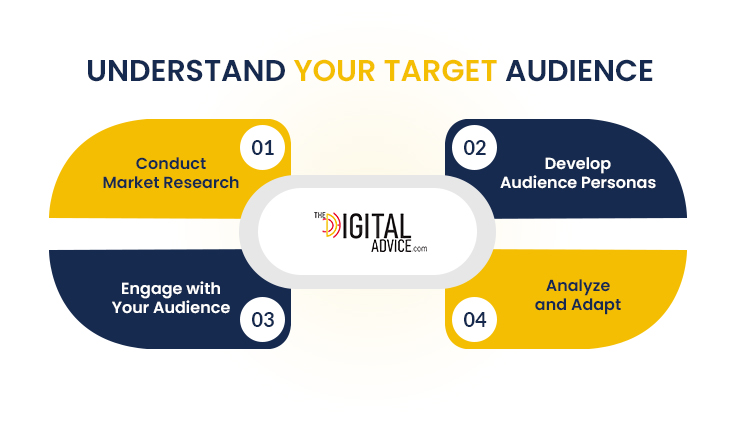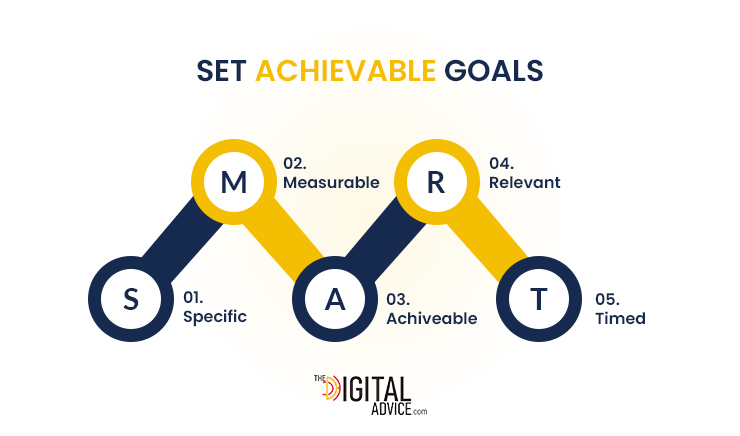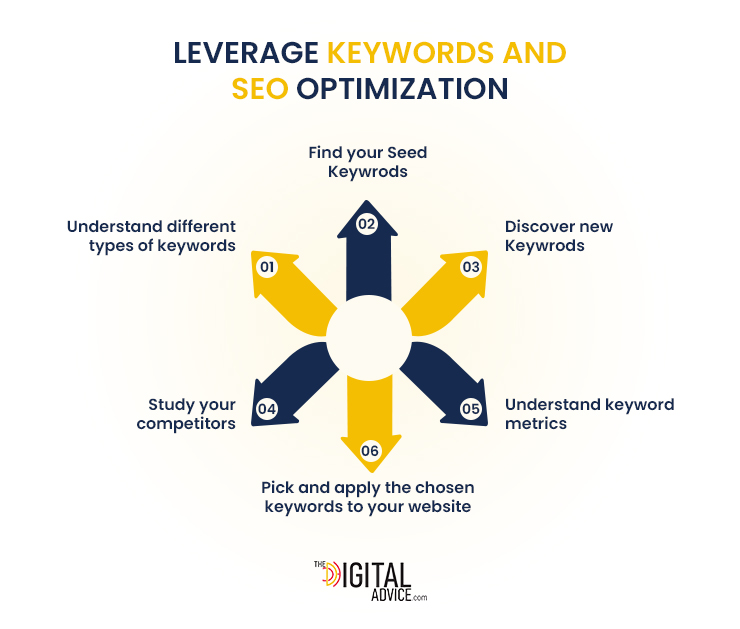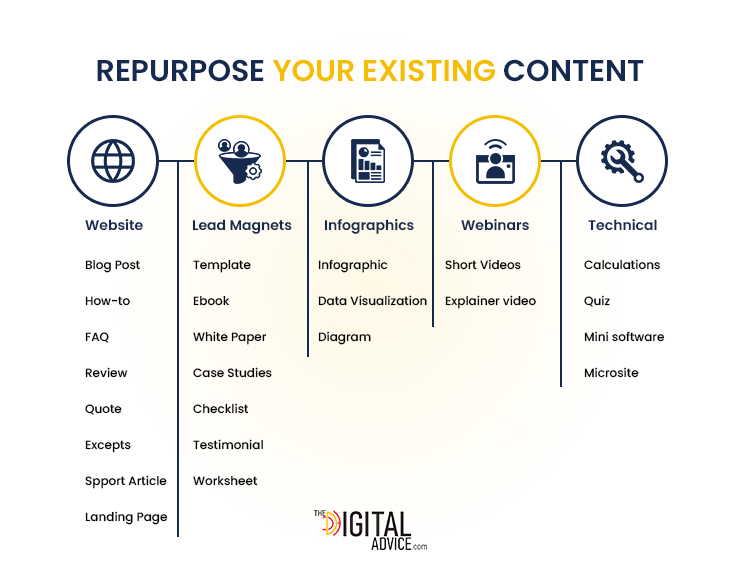High-quality and engaging content is key to making your brand visible and building a loyal customer base. The right approach to content marketing can become the voice your brand needs to get the desired attention from its target audience.
If you work in the content industry, you can understand how important content is for your online success. However, even the most brilliant and effective content cannot create the impact you want without a robust content distribution strategy.
If you are not sure how to create content distribution strategy, follow this essential guide for success.
30-Second Summary
You must begin by understanding your target audience and the channels they use to develop an effective content distribution strategy. From there on, you can tailor your content for each platform to boost engagement and optimize it for SEO to enhance visibility. Remember to use a mix of owned, paid, and earned content to extend your reach.
Digital marketing requires consistent learning and proactive application. Hence, you must regularly track performance metrics and adjust your strategy based on what’s most effective to ensure ongoing success and relevance.
What is a Content Distribution Strategy?
A content distribution strategy is a plan for delivering your content to the right audience through various channels and platforms. It involves selecting the most effective methods and platforms to share your content, ensuring it reaches and engages your target audience effectively.
A strong and automated content distribution strategy is key to maximizing the impact of your content marketing efforts, leading to the success of your marketing goals.
How to Develop an Effective Content Distribution Strategy?
Developing the best content distribution strategy is all about aligning your content with the needs and preferences of your audience. Here is all you must know about how to build a perfect content distribution strategy.
1: Understand Your Target Audience
The first step to creating brilliant content distribution strategies is to understand your audience on a deeper level. It all starts with identifying who they are, what challenges they face, what solutions they need, and their buyer persona. All you learn from your audience is the foundation of your content distribution strategy.
You can understand your audience by engaging with them through different platforms, such as social media. Engaging with your customers tells you more about their preferences, behaviors, preferred channels, and much more. Once you have the necessary insights, you can use the power of well-researched content to prompt your customers to engage with your brand. Your content can be in the form of blogs, social media posts, and even e-books or whitepapers.
Once you have the necessary insights, you can use the power of well-researched content to prompt your customers to engage with your brand. Your content can be in the form of blogs, social media posts, and even e-books or whitepapers.
2: Create Valuable Content
After understanding your ideal audience, you can feel prepared to create content. This process can be easier if you have previously shared content with your audience. By doing so, you can see what resonated well with them and figure out why it did.
The reason for the engagement of your ideal audience can be the tone you used, the topics you chose, or how you formatted the content. Identifying the factors that resonate well with your audience can help you refine your content distribution strategy.
In addition to understanding which content and why it resonated with your audience, you must also keep an eye on what is misaligned with your audience’s interest and why. This way, you will be able to avoid practices that may be hindering your relationship with your audience.
3: Pick the Right Channels
After creating valuable content that resonates with your audience, the next step concerns ensuring that your audience gets to see it. You can only ensure the desired results if you are engaging your audience where it matters.
For example, fashion retailers share their latest collections on Instagram and Pinterest because these platforms are highly visual and cater to users looking for style inspiration. These platforms can help showcase the new clothing line with high-quality images.
You must aim for organic reach first to build trust and credibility. From there on, you can also look at paid channels to amplify your visibility. A balance of both mediums can help you amplify your visibility for the right audience.
4: Set Achievable Goals
All the best content distribution strategies rely on setting clear and scalable goals. Whether you want to increase brand awareness, generate leads, or drive sales, knowing your goals will help you pave the path to fruitful content distribution.
Setting the right goals can help you understand why and what you are doing and where you will stand once these goals are achieved. In such moments, setting specific, measurable, achievable, relevant, and time-bound (SMART) is pivotal.

When you set SMART goals, you can leverage a clear strategy for content distribution and measure your progress. This way, you can ensure that your strategy is aligned with your broader marketing objectives, such as increased sales or boosted visibility.
5: Create a Distribution Plan
Now that you have great content, knowledge about your audience, and a clear understanding of your goals, it is time for you to create a distribution plan. This step is crucial as it helps you delve deeper into the right channels and the most impactful plans.
Creating a content calendar is one of the best ways to learn about content distribution strategy and enhance its impact. Tools like Google Calendar, Asana, and Trello can be very helpful in keeping your content distribution strategy on track.
You must also look into the best times to post content on different channels while learning how to create content distribution strategy. Remember, trial and error is a part of the process. Hence, you must be ready to test at different times and track engagement.
6: Leverage Keywords and SEO Optimization
Whether you want to create or refine your content distribution strategy, you must know about keywords and SEO Optimization. This step is crucial to help your content be discovered by the right audience.
For example, when someone searches for a specific subject related to your content, SEO optimization and usage of the right keywords can increase the chances of your page appearing among the top search results. You can incorporate these keywords naturally into your content to achieve the desired outcomes.

You can start with keyword research to identify terms and phrases your target audience uses. For example, if you run a travel agency specializing in luxury trips, use tools like Google Keyword Planner or SEMrush to find terms such as ‘luxury vacation packages,’ ‘5-star resort holidays’, or ‘exclusive travel experiences.
7: Collaborate More
Collaboration is also an important part of learning how to build a perfect content distribution strategy. Whether you collaborate with industry leaders or team up with influencers, it can help you reach a broader target audience.
For example, you can make guest posting a part of your automated content distribution strategy. Guest posts not only help you get discovered by the host’s audience but also allow you to position your brand as an authority.
For example, Red Bull partnered with GoPro to co-create and distribute videos filled with energy and content showcasing extreme sports feats. This collaboration benefitted both brands while allowing them to become visible to each other’s audiences.
8: Track and Monitor
The best content distribution strategies are always active. They always keep evolving based on audience preferences, changing trends, and more. Tracking your efforts is the best way for you to understand where you should be allocating the most resources.
You can use different tools such as Hubspot, Google Analytics, and BuzzSumo to track and monitor your efforts. To measure the effectiveness of your content, begin by examining the sources of traffic, such as organic search and social media.
After that, you can evaluate how effectively your content turns visitors into leads or customers by keeping track of conversion rates. In addition, you can assess social media reception by monitoring social shares and interactions.
Further, you can track SEO performance through keyword rankings, click-through rates, and organic traffic.
Content Distribution Channels
There are three main types of content distribution. Each type has its own advantages and unique features to be considered. You must learn about these types while excelling in how to build a perfect content distribution strategy.
1: Owned Content
Owned media refers to content distribution channels that you control directly. This includes your website, blog, email lists, and social media profiles. Such content provides you full control and helps you build your brand’s voice, provide valuable content, and maintain a direct relationship with your followers.
Blog posts on your website, sending out newsletters to your email subscribers, and posting updates on your branded social media accounts are some examples of owned content.
2: Paid Content
As the name suggests, paid content refers to distributing your content through paid advertising channels. This includes search engine ads, social media ads, display ads, and other forms of online advertising. It allows you to boost visibility and reach a broader quickly.
The biggest advantage of paid media is that your business can leverage detailed targeting options to reach specific demographics.
3: Earned Content
Earned media is the exposure your business gains through organic means, often as a result of PR efforts, content quality, and brand reputation. Earned media is the best pathway to make your business more credible and trustworthy, especially when compared to owned or paid media.
The common examples of earned content include media coverage, mentions, shares, and reviews from third parties. These third parties may include journalists, influencers, or customers.

Best Practices for Effective Content Distribution
Learning how to create a content distribution strategy and applying this information in real life works best when you follow the best practices. Here are some of the best practices you must consider incorporating in your content.
-
Use a Mix of Content
In order to create or improve your content distribution strategy, it’s essential to utilize a combination of paid, earned, and owned content. Each channel has its own distinct advantages, so it’s important to use and leverage them according to your business requirements and your audience’s interests.
-
Repurpose Your Existing Content
A content calendar is a part of every effective automated content distribution strategy. In addition to sharing new content with your audience, you must audit and update your existing content to extend its lifestyle.
-
Ask Your Audience
The audience’s opinions are a part of every creative content distribution strategy. You can conduct surveys and gather feedback through different platforms to get insights from your audience and optimize user experience.
-
Try Different Approaches
Experimenting is a part of learning how to build a perfect content distribution strategy. You must try different types of content on different platforms to study heatmaps and create the best material for boosted engagement.
-
Keep Up with Trends
Content marketing is an ever-evolving force in the digital era. Staying up to date with the latest trends in content marketing can help you incorporate these trends in your content distribution strategy for better audience engagement.
Encourage Audience Engagement
Every best content distribution strategy encourages audience interaction with engaging content and innovative Call to Action (CTAs). The more you engage with your audience, the better you will know them. This information will enable you to resonate your content to their needs.
Final Words
As this comprehensive guide reaches its end, take your time to reflect on where your business stands after learning how to build a perfect content distribution strategy.
A well-planned content distribution strategy allows for complete control over the content creation and distribution process. This information is essential for understanding what to share, when, and how to ensure accurate and fruitful marketing efforts.
FAQs
Here are the answers to some of the most frequently asked questions regarding creative content distribution strategies.
1: How do I choose the best channels for my content distribution strategy?
In order to choose the best channels for your automated content distribution strategy, you must understand your audience by analyzing the relevant data. You must learn more about their responsiveness from different efforts, such as PPC advertising and organic reach, to see what engages them the best.
This information can help you choose the best channel for your content distribution strategy.
2:How often should I distribute content to my target audience?
Businesses should aim to create a balance between ensuring a consistent presence and posting without compromising the quality of their content. Further, you can also rely on analytics to better understand the preferences of your audience and create the best content distribution strategy.
3: How do I measure the success of my content distribution strategy?
Measuring the success of creative content distribution strategies is possible by tracking different metrics. These metrics may include your website traffic, lead generation, conversion rates, and more. You can let these insights guide you on how to refine your content distribution strategy across all chosen platforms effectively.
4: Should I hire a digital marketing agency for content distribution strategy?
Learning how to create a content distribution strategy and leveraging the lessons learned can be a time-consuming endeavor. Looking at how taxing content distribution strategies are, it is always a good idea to let the experts handle the matter.
Hiring a digital marketing agency can be very cost-effective. They can provide promising results based on their expert knowledge and resources.
5: Can content distribution help in SEO?
Yes, content distribution can help with SEO by increasing visibility and traffic, generating backlinks, and improving domain authority. Effective distribution of your content also keeps content fresh and relevant for your audience, leading to better search engine rankings.








